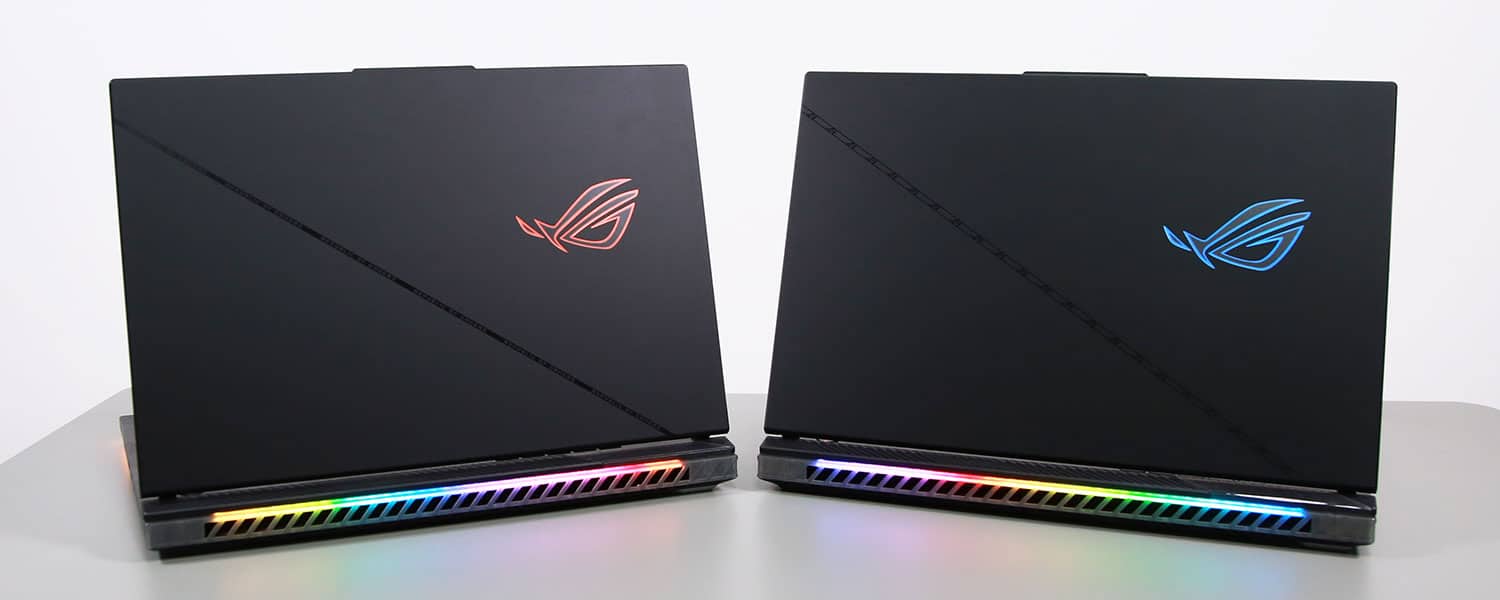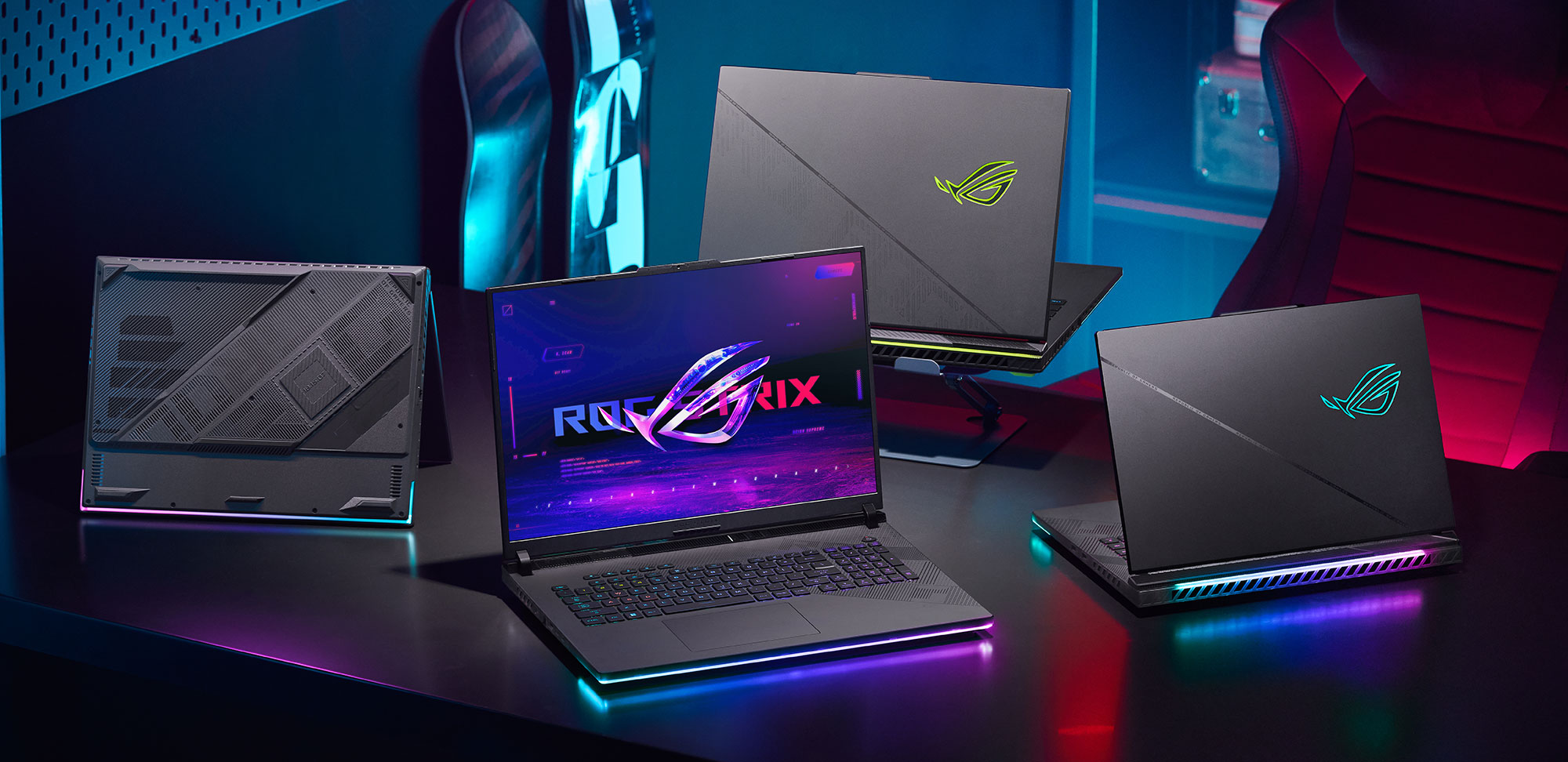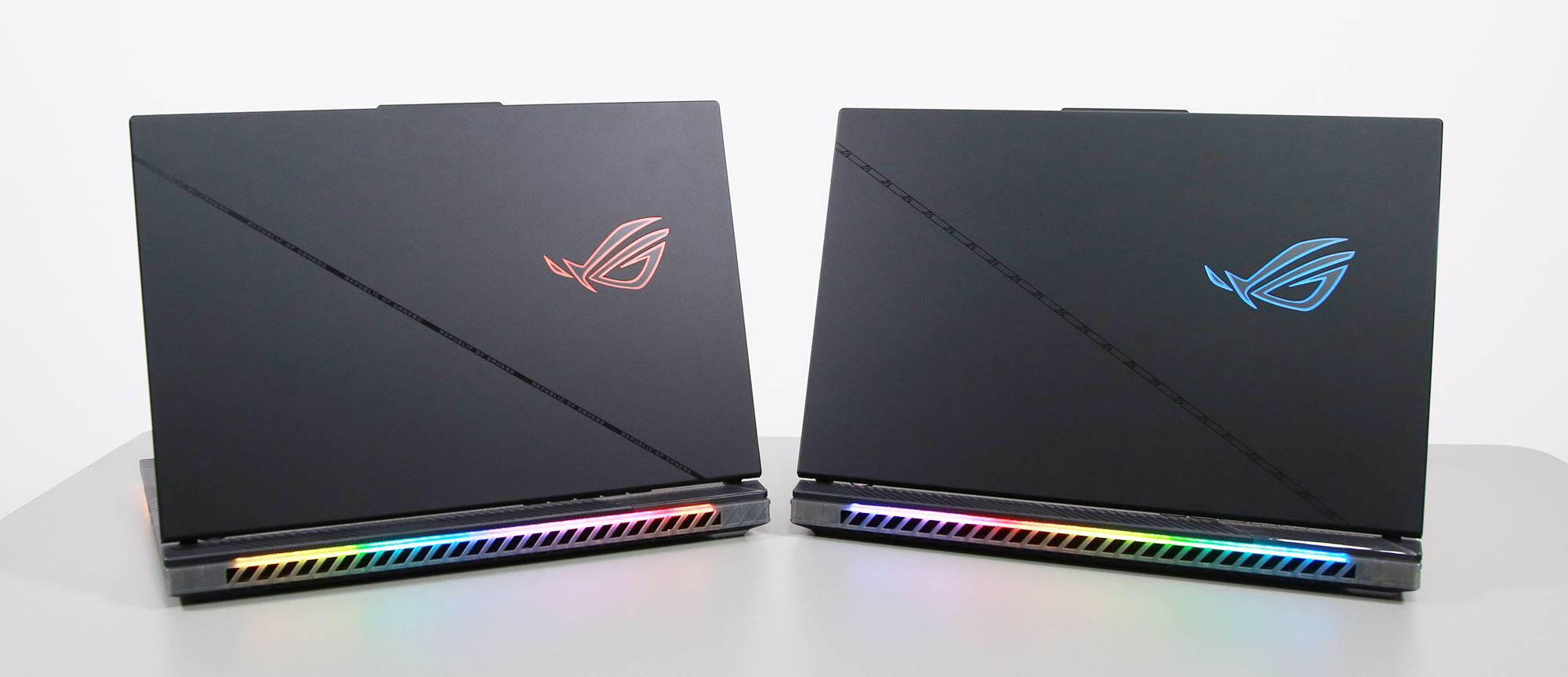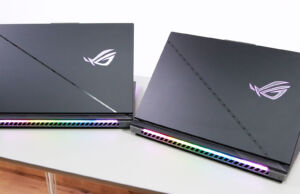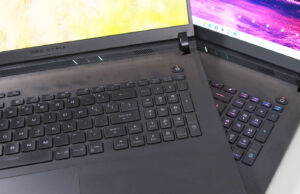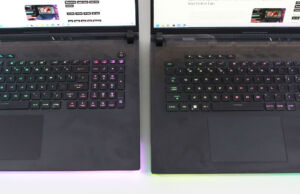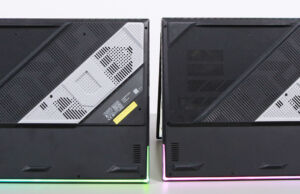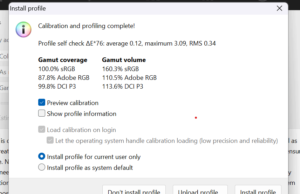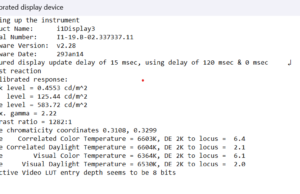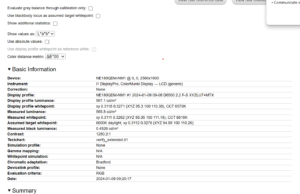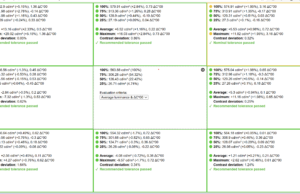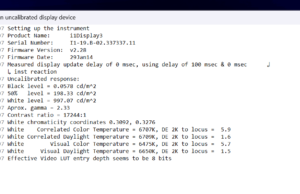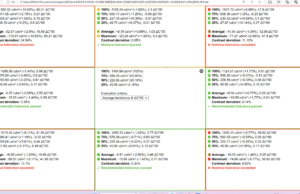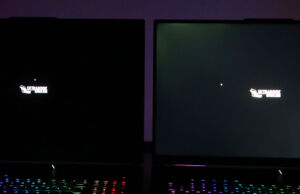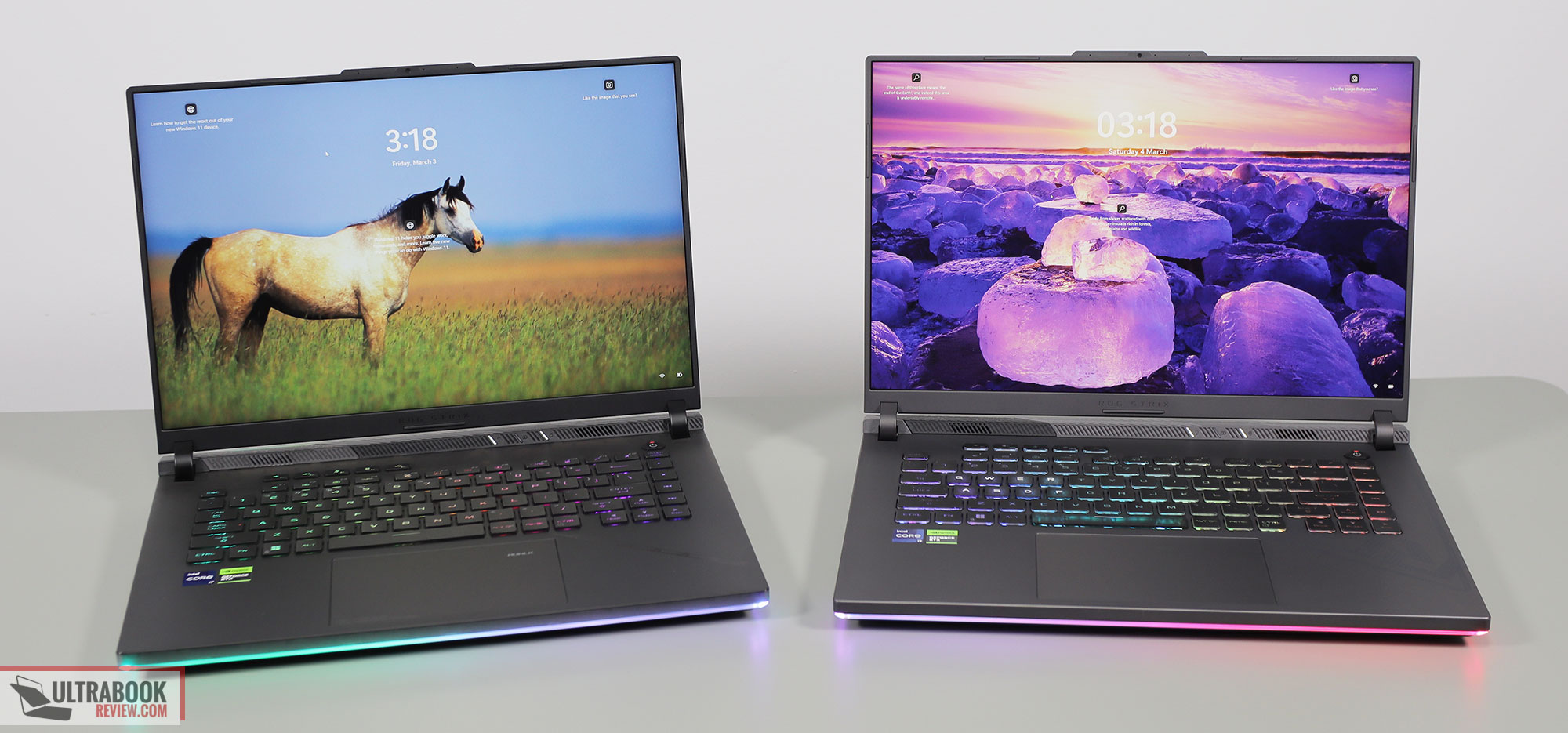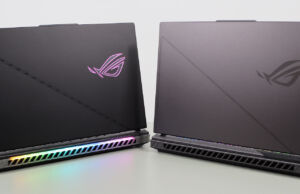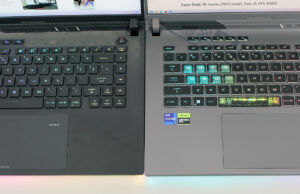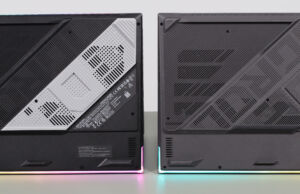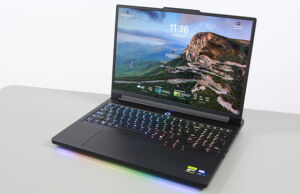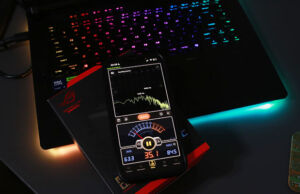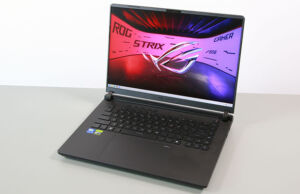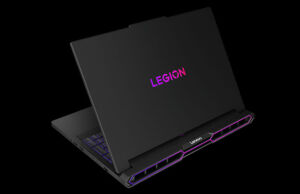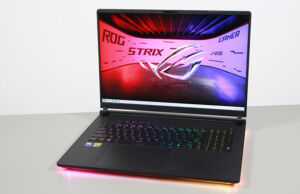Table of Contents
In this article we’re going over the 2024 updates of the Asus ROG Strix Scar and ROG Strix G lineups of full-size performance and gaming laptops.
We’ve already reviewed all these models in their 2023 generations, and since these were at the time brand new designs for 2023, the 2024 updates are just minor hardware revamps on the existing chassis.
As you might know by now, the ROG Scar are Asus’s top-tier models, with a few design tweaks and extra features over the Strix G models, although the two lineups are generally a similar barebone chassis. I’ll explain all the subtle differences between the two lineups further down.
Update: Here’s my detailed review of the 2024 Asus ROG Scar 18 series.
But first, let’s go over what’s new for the 2024 model years.
All these have been bumped up the the latest 14th-gen Intel Raptor Lake-R Core i9-14900HX, which is merely a slightly refined iteration of the i9-13980HX implemented before. They also ship with DDR5-5600 memory by default, while the 2023 models shipped with DDR-54800 memory. However, the GPU options haven’t changed at all, with 4080/4090 configurations available for the Scars and 4050 to 4080 for the Strix G models.
There’s one more notable addition for the Scar 18 model, and that’s the option to configure it with a mini LED 18-inch display. Previously, the mini LED panel was only available for the 16-inch Scar 16, but now you can get mini LED panels on both sizes.
Those aside, I also noticed some slight aesthetic changes for the 2024 generation, and we’ll discuss them further down as we look at the 2024 Scar 18 and 2023 Scar 18 side by side.
Overall, though, these 2024 ROG models are minor incremental updates of their predecessors. These units are mid-cycle and were not going to be majorly changed after one year anyway, and on top of that, this early-2024 hardware is almost the same as before. We’ll surely see more interesting updates with the 2025 generations, or perhaps later in the year if/when new hardware becomes available.
Oh, and if you were perhaps hopping for AMD Ryzen HX hardware in these 16/18 inch notebooks, tough luck, these are still Intel exclusive, and AMD Ryzen HX hardware is still only available in the older 17-inch Scar 17 and Strix G17 models. But that might change later in the year when AMD launches their updated HX mobile hardware for 2024.
2024 Asus ROG Strix Scar 16 G634 and Strix Scar 18 G834
Here’s the complete specs sheet of these 2024 ROG Scar 16 and Scar 18 models.
| 2024 ASUS ROG Strix SCAR 16 G634 | 2024 ASUS ROG Strix SCAR 18 G834 – review | |
| Display | 16-inch, 16:10, non-touch, matte Nebula HDR QHD+ 2560 x 1600 px mini LED, 240 Hz 3ms, 1100-nits HDR, 100% DCI-P3 2048 dimming zones Nebula QHD+ 2560 x 1600 px IPS, 240 Hz 3ms, 500-nits, 100% DCI-P3 |
18-inch, 16:10, non-touch, matte Nebula HDR QHD+ 2560 x 1600 px mini LED, 240 Hz 3ms, 1100-nits HDR, 100% DCI-P3 2304 dimming zones Nebula QHD+ 2560 x 1600 px IPS, 240 Hz 3ms, 500-nits, 100% DCI-P3 |
| CPU | Intel 14th-gen Raptor Lake R, up to Core i9-14900HX, 24 Cores/32 Threads | |
| GPU | Intel UHD + up to Nvidia GeForce RTX 4090 16GB Mobile (up to 175W TGP with Dyn Boost) with MUX, Advanced Optimus, GSync |
|
| Memory | up to 64 GB DDR5-5600 (2x DIMMs) | |
| Storage | 2x M.2 gen4 SSD slots | |
| Connectivity | WiFi 6E (Intel AX211) 2×2 with Bluetooth 5.2, 2.5Gigabit LAN | |
| Ports | Left: power, 2.5G Lan, 1x USB-C with Thunderbolt 4, 1x USB-C gen2 (with video, data, power), HDMI 2.1, headphone&mic Right: 2x USB-A 3.2 gen2 |
|
| Battery | 90Wh, 330 W power adapter, USB-C charging up to 100W | |
| Size | 354 mm or 13.94” (w) x 264 mm or 10.4″ (d) x 22.6 – 30.4 mm or .89″ – 1.2” (h) |
400 mm or 15.75” (w) x 294 mm or 11.57″ (d) x 23.1 – 30.8 mm or .9″ – 1.21” (h) |
| Weight | from 2.5 kg (5.5 lbs) + charger | from 3.1 kg (6.85 lbs) + charger |
| Extras | rubber-dome per-key RGB backlit keyboard (with NumPad on the Scar 18), 2.0 mm travel, large glass touchpad, HD camera, quad speakers ??, tri-fan cooling module with full-width heatsink, Conductonaut Extreme liquid metal on CPU/GPU |
|
And here are my detailed reviews of the 2023 Scars, which will properly explain when to expect from these two in terms of features, particularities and performance, until we get to review the 2024 models:
- ROG Scar 16 review – RTX 4080 configuration, mini LED display;
- ROG Scar 18 review – RTX 4090 configuration, IPS display.
- Update: Here’s my detailed review of the 2024 Asus ROG Scar 18 series, RTX 4090 configuration with the updated mini LED display.
Down below I’ve added some side-by-side images of the 2024 (left) and 2023 (right) Scar 18 models. A very close inspection reveals that the interior deck is slightly revised for the new model, no longer being as translucent in its upper half as the on the 2023 generation. There’s also a different pattern used for the diagonal branding on the lid.
Everything else seems identical to me, though, including the case, inputs and ports. This, unfortunately, means the status LEDs are still bright and annoyingly placed under the screen, the interior main deck is still very smudgy and difficult to wipe clean, and the F1-F12 writing on the keys is still not backlit.
As for the mini LED display on the 2024 Scar 18, here’s how it fares against the IPS panel on the 2023 Scar:
| mini LED panel on 2024 Scar 18, on single-zone backlighting | IPS panel on 2023 Scar 18 |
|
|
So the mini LED is brighter and offers either single-zone or multi-zone backlighting, as options in Armoury Crate.
On single-zone, it performs much as a regular IPS without zone dimming, thus the contrast and blacks are IPS level, and the luminosity and color uniformity are excellent. But the overall SDR brightness is higher than on most regular IPS panels.
Here are our measurements on single-zone backlighting.
Opting for multi-zone lighting enables zone dimming, which boosts the brightness, lower the black levels and increase contrast. However, uniformity is thrown down the water, mostly in the corners, and you’re going to notice the standard downsides of the mini LED technology, such as blooming and some shading artefacts on solid colors. I’m not going to comment on these based on this early pre-production model, but I’ve covered the mini LED technology available in laptops in this separate article.
Here are the same measurements on multi-zone backlighting.
As far as PWM goes on mini LED panels, the technology turns each dimming zone on and off at 5 KHz in a fashion reminiscent to PWM. However, as far as I understand, this sort of high frequency modulation doesn’t lead to regular flickering noticeable to the human eye. Nonetheless, make sure to further look into this aspect if flickering is a concern to you.
I’d also like to touch on light-bleeding, where the mini LED sample is miles better than the IPS that I have here (albeit the IPS is worse than average). And that’s of course on single-zone lighting, as on multi-zone, there’s no light-bleeding on the mini LED whatsoever.
Finally, it’s important to add that the 18-inch mini LED on the Scar 18 is a newer generation than the one in the 16-inch model, with a denser array of zones. Asus mention 2000+ dimming zones for the 18pinch model, while the 16-inch panel is a design with a little over 1000 zones. That means brightness control is going to be smoother on this panel, with better uniformity and less blooming and artefacts.
Drawing the line, this panel is an upgrade over the IPS in the previous Scar, both in terms of brightness and in terms of how multimedia content looks when zone-dimming is switched on. At the same time, I appreciate that Asus offer control over the dimming zones, allowing for the single-zone lighting option in the settings, crucial for color-accurate work. At the same time, movies and games look much nicer with zone-dimming, even if the colors are not entirely accurate in this case.
At this point, I cannot discuss the other major update of the 2024 Scars, the performance of the Intel Core i9-14900HX processor in sustained loads and games. That’s because this unit is an early pre-production sample. I wouldn’t expect significant differences over the i9-13980HX in the 2023 models, but we’ll know more once I get to review a proper retail variant.
With that out of the way, let’s also go over the Strix models and how the Scars and Strix fare against each other.
2024 Asus ROG Strix G16 G614 and Strix G18 G814
Here’s the complete specs sheet of these 2023 ROG Strix G16 and G18 models.
| 2024 ASUS ROG Strix G16 G614 | 2024 ASUS ROG Strix G18 G814 | |
| Display | 16-inch, 16:10, non-touch, matte Nebula QHD+ 2560 x 1600 px IPS, 240 Hz 3ms, 500-nits, 100% DCI-P3 FHD+ 1920 x 1200 px IPS, 165 Hz 7ms, 300-nits, 100% sRGB |
18-inch, 16:10, non-touch, matte Nebula QHD+ 2560 x 1600 px IPS, 240 Hz 3ms, 500-nits, 100% DCI-P3 FHD+ 1920 x 1200 px IPS, 165 Hz 7ms, 300-nits, 100% sRGB |
| CPU | Intel 14th-gen Raptor Lake R, up to Core i9-14900HX, 24 Cores/32 Threads | |
| GPU | Intel UHD + up to Nvidia GeForce RTX 4080 16GB Mobile (up to 175W TGP with Dyn Boost) with MUX, Advanced Optimus, GSync |
|
| Memory | up to 64 GB DDR5-5600 (2x DIMMs) | |
| Storage | 2x M.2 gen4 SSD slots | |
| Connectivity | WiFi 6E (Intel AX211) 2×2 with Bluetooth 5.2, Gigabit LAN | |
| Ports | Left: power, Lan, 1x USB-C with Thunderbolt 4, 1x USB-C gen2 (with video, data, power), HDMI 2.1, headphone&mic Right: 2x USB-A 3.2 gen2 |
|
| Battery | 64 or 90Wh, 240 to 330 W power adapter, USB-C charging up to 100W | |
| Size | 354 mm or 13.94” (w) x 264 mm or 10.4″ (d) x 22.6 – 30.4 mm or .89″ – 1.2” (h) |
400 mm or 15.75” (w) x 294 mm or 11.57″ (d) x 23.1 – 30.8 mm or .9″ – 1.21” (h) |
| Weight | 2.5 to 2.7 kg (5.5 to 5.95 lbs) + charger | 3.1 to 3.3 kg (6.9 to 7.3 lbs) + charger |
| Extras | rubber-dome per-key RGB or 4-zone RGB backlit keyboard (with NumPad on the G18), 2.0 mm travel, large glass touchpad, HD camera, dual speakers, tri-fan cooling module with full-width heatsink, liquid metal on CPU/GPU |
|
And here are my detailed reviews of the 2023 ROG Strix models, until we get to test the 2024 updates:
- ROG Strix G16 review – RTX 4060 configuration, IPS display;
- ROG Strix G18 review – RTX 4070 configuration, IPS display.
Here’s what sets the Strix G and Scar series apart.
Aesthetically, the Scars are somewhat more premium designs, available in darker color with cleaner branding and a handful of extra RGB lightbars. The Strix models are a dark-gray color with a more crowded design and a non-RGB logo on the lid – which I preffer. They are also better at hiding smudges.
Down below I’ve added a few pictures of the ROG Scar 16 next to the ROG Strix G16, both the 2023 models, for a better understanding of how the two designs differ from each other. Keep in mind the 2024 Scar is a little different, and there might be some subtle changes on the 2024 Strix models as well.
Design aside, the Scars are also the only ones available with mini LED panel options, while on the Strix you can only get IPS panels, either a good-quality QHD+ option or a lesser-quality FHD+ model reserved for the lower-specced configurations.
You’re also getting 4x speakers on the Scars, while the Strix lack the extra tweeters placed under the screen on the Scars. And then there’s 2.5G wired Lan on the Scars, and only 1G Lan on the Strix units.
In fact, the Strix models are available in a much wider range of configurations, with options to 4-zone or per-key RGB keyboards, 64 or 90 WH batteries, and various processors and graphics chips. For the most part, you’ll find these with RTX 4050/4060/4070 GPUs, but also with an RTX 4080 in some regions. You’ll also find these with Core i7 processors in some variants, so make sure you understand the performance differences between those i7s and the i9s.
Anyway, these are briefly the main differences between the ROG Strix G and Scar Asus models. I’d reckon most of you would be interested in the Strix G variants, as these tend to be more competitively priced, but make sure you understand the specs particularities of each model before jumping on the cheapest variant. Sometime, what the cheapest might not necessarily be the smartest choice.
At the same time, the 2024 ROG Scar 18 is especially interesting this year, as one of the most powerful and better cooled 18-inch laptops out there, now finally available with the best display technology available at this size today. It’s not the only mini LED 18-inch unit available this year, though.
We’ll get more in-depth on these 2024 Asus ROG notebooks in our reviews, in the weeks to come. In the meantime, if you have any questions or feedback on these devices, get in touch in the comments section down below.

